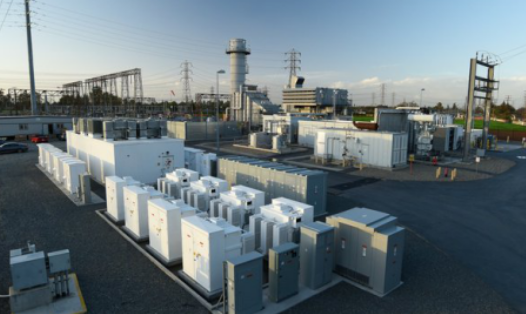中国储能网讯:随着笔记本电脑和手机的爆炸式增长,大部分储能技术的安全重点都集中在移动应用上。这些应用中使用的锂离子电池在尺寸和密度方面受到更严格的限制,可能导致更高的风险。
固定储能应用通常比移动应用更安全,因为其空间的限制并不相同。但是在一些市场上,空间也可能成为固定储能面临的难问题,特别是使用锂离子电池的项目。

随着新的安全协议的预期发布,2018年这样的储能系统可能会得到更高的评价。
纽约的标准
纽约市就是一个很好的例子。纽约消防局(FDNY)正在制定标准以确保电池储能项目的安全安装,但人口密度和官僚机构重叠等因素使纽约成为储能项目最具限制性的市场之一。
纽约消防局(FDNY)正与纽约州能源研究与发展局(NYSERDA)、美国消防协会、保险公司,以及爱迪生联合电气公司合作,致力于制定电池安全的程序和协议。
纽约州能源研究与开发局(NYSERDA)还与爱迪生联合电气公司合作制定联合电池储能安全计划,旨在解决纽约消防局和负责审查储能装置应用的其他机构面临的关键安全问题。这一举措是为了支持纽约州州长安德鲁•科莫(Andrew Cuomo)的能源愿景改革而开展的,其愿景其中包括通过使用电池储能来满足电力高峰需求。
去年5月,纽约市布鲁克林区部署了首个功率为300千瓦,电量为1.2兆瓦时的锂离子电池项目。但是这个项目部署在室外,其消防安全问题没有得到解决。
纽约的担忧在存储市场上有些独特。其他司法管辖区有安全标准,但是他们的担心一般还没有上升到纽约的水平。这可能即将改变。
美国消防协会标准
美国消防协会刚刚制定完成了NFPA 855“固定式储能系统安装标准”的草案。该草案可供公众进行评论。其最终稿将于2019发布和发表,最终版本将在2020年发布。
NFPA 855的发布将在美国全国范围内制定更严格的要求,并可能导致对封闭空间中的储能位置的总规模得到限制。
“所有具有管辖权的机构都将尊重和维护NFPA发布的标准规范。事实上,他们会很高兴,因为这样他们可以自己的要求做出决定。”DNV GL公司储能技术总监Davion Hill说。
美国能源部也正在制定能源储存安全路线图。许多致力于制定固定储能安全标准的小组的活动正在由美国能源部桑迪亚国家实验室(Sania National Laboratory for DOE)开展的项目进行,该项目负责协调NFPA、国际规范委员会和IEEE等代码设置机构的工作,以及诸如DNV GL和FM Global等公司提供测试并有助于建立规范和标准。
私营公司的标准
一家在安全标准方面具有广泛影响力的私营公司是美国保险商试验所(UL),该公司在2014年发布了世界上第一个用于固定储能的安全标准UL 9540。 UL 9540是其他组织(如NFPA)为制定消防安全或为建筑行业部署储能标准而制定的具体规范背后做了大部分工作的基本标准。
UL能源和动力技术首席工程师Ken Boyce表示, UL将一直致力于UL 9540的标准工作, UL最近发布了UL 9540A,这是一种评估电池储能系统热失控的测试方法。
热失控是安全专家和消防人员最关心的问题之一。当电池系统中的火灾级联失控时,可能会发生这种情况。
这是纽约市消防部门最为关心的问题之一,同时还有在火灾中电池释放爆炸性气体的问题,因为电池火灾即使在被扑灭后也能重新点燃。
Boyce表示,UL的标准在技术方面是不可知的。它们适用于所有形式的储能。在实践中,电池系统并不是唯一可以着火的储能系统。 2011年,Beacon Power公司在纽约的20兆瓦飞轮储能设备曾经发生爆炸。
安全不是障碍
总的来说,Boyce表示并不会将安全问题视为储能项目发展的障碍。随着标准的不断发展,其发展将变得更加容易。他说,“我们正在与纽约消防部门密切合作,我们希望看到这项技术向前发展。”
与此同时,Hill说,NFPA 855将改变政府机构允许制度的方式,因为绝大多数制度默认了NFPA,而不是自己制定的规则。事实上,尽管标准仍然以草案的形式出现,一些利益相关者已经从NFPA的发展标准中获得指导。Hill说,“2020年可能是储能项目大规模开发的起点。”(中国储能网独家编译,转载请注明来源)
Energy storage safety set to move forward in 2018 with new fire standards
New York City and the National Fire Protection Association are developing new safety standards, while UL is updating the world's first such requirements.
Author
Peter Maloney @TopFloorPower
Published
Jan. 2, 2018
Most of the focus on energy storage safety has been on mobile applications, given the spate of exploding laptop and phone batteries.
Lithium-ion batteries used in those applications are under tighter restrictions for size and density that can lead to higher risks.
Stationary storage applications are often safer than mobile uses because there are not the same space constraints. But in some markets, space can also be an issue for stationary storage, especially with projects that use lithium-ion batteries.
Such systems could get a higher profile this year with the expected release of new safety protocols.
New York standards
New York City is a prime example. The Fire Department of New York (FDNY) is working on drawing up standards to ensure the safe installation of battery storage projects, but population density and bureaucratic overlap still make New York one of the most restrictive markets for energy storage projects.
FDNY is collaborating with the New York State Energy Research and Development Authority (NYSERDA), the National Fire Protection Association, insurance companies and Consolidated Edison. Together they are working to come up with procedures and protocols for battery safety.
NYSERDA also is working with Con Ed on a joint battery energy storage safety initiative that aims to answer critical safety questions confronting FDNY and other agencies that are responsible for reviewing applications for energy storage installations. The initiative was undertaken in support of Gov. Andrew Cuomo’s Reforming the Energy Vision, which, among other things, looks to reduce peak demand by using battery storage.
The city saw its first behind-the-meter installation last May — a 300 kW, 1.2 MWh lithium-ion battery project in Brooklyn. But that project is sited outside, where fire safety concerns are muted.
The release of NFPA 855 “will create more stringent requirements nationally” and could result in a cap on the total size of an energy storage location in an enclosed space.
Davion Hill
Energy Storage leader for the Americas, DNV GL
New York’s concerns have been somewhat unique in the storage market. Other jurisdictions have safety standards, but their concerns generally have not risen to the level of New York’s. That may be about to change.
National Fire Protection Association standards
The National Fire Protection Association has just completed a draft version of NFPA 855, Standard for the Installation of Stationary Energy Storage Systems. The draft is available for public comment. The final draft is scheduled for release and comment next year with the final version scheduled for release in 2020.
The release of NFPA 855 “will create more stringent requirements nationally” and could result in a cap on the total size of an energy storage location in an enclosed space.
“All authorities having jurisdiction respect and uphold NFPA. In fact, they will be glad because it relieves them of responsibility for deciding their own requirements,” Hill said.
Nationally, the Department of Energy is also working on an energy storage safety roadmap. The activities of many of the groups working to develop safety standards for stationary energy storage are being focused through programs run by Sandia National Laboratory for the DOE, which coordinates the efforts of code setting agencies such as the NFPA, the International Code Council and IEEE, as well as companies such as DNV GL and FM Global, which provide testing and contribute to establishing codes and standards.
Private standards
One private sector company with wide reach in safety standards is UL, which in 2014 published UL 9540, the world’s first safety standard for stationary energy storage. UL 9540 is the underlying standard behind much of the work being done by other organizations, such as NFPA, to draw up specific codes for fire safety or for deploying energy storage standards for the construction industry.
UL continues to work on UL 9540, Ken Boyce, principal engineer director for energy and power technologies at UL, told Utility Dive. UL recently released UL 9540A, a test method for evaluating thermal runaway in battery storage systems.
Thermal runaway is one of the chief concerns among safety experts and first responders. It can occur when a fire in a battery system cascades out of control.
It's a top concern for New York City fire officials, along with batteries outgassing explosive gases during a fire and battery cells that can re-ignite even after being extinguished.
Boyce says UL’s standards are agnostic with respect to technology. They apply to all forms of storage. And in practice, battery systems are not the only ones that can catch fire. In 2011, Beacon Power’s 20 MW flywheel energy storage facility in New York exploded.
Safety not a barrier
Overall, Boyce doesn’t see safety concerns as a barrier to energy storage development. As standards continue to evolve, development will become “easier and easier,” he said. “We are very engaged with authorities in New York, and we want to see this technology move forward.”
Meanwhile, Hill said NFPA 855 will change the way authorities permit systems because the vast majority of them default to NFPA rather than writing their own rules. In fact, he said some stakeholders are already taking guidance from NFPA’s developing standards. While the standards are still in draft form, “2020 may be the landing spot for projects that are just starting development today,” Hill noted.





